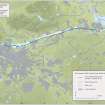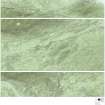Pricing Change
New pricing for orders of material from this site will come into place shortly. Charges for supply of digital images, digitisation on demand, prints and licensing will be altered.
Upcoming Maintenance
Please be advised that this website will undergo scheduled maintenance on the following dates:
Thursday, 9 January: 11:00 AM - 3:00 PM
Thursday, 23 January: 11:00 AM - 3:00 PM
Thursday, 30 January: 11:00 AM - 3:00 PM
During these times, some functionality such as image purchasing may be temporarily unavailable. We apologise for any inconvenience this may cause.
East Beancross, Antonine Wall
Frontier Defence (Roman)
Site Name East Beancross, Antonine Wall
Classification Frontier Defence (Roman)
Canmore ID 110193
Site Number NS97NW 46.05
NGR NS 9237 7957
Datum OSGB36 - NGR
Permalink http://canmore.org.uk/site/110193
- Council Falkirk
- Parish Falkirk
- Former Region Central
- Former District Falkirk
- Former County Stirlingshire
NS97NW 46.05 9237 7957
Trenching located the wall at this location, as it descends E to the Westquarter Burn; the wall was just over 4.3m wide and curved S in a shallow re-entrant, 8 degrees off line, for the crossing. In one trench the stone foundation was 0.46m thick (3 layers of stone), having been terraced to a level bottom 0.2m below the kerbstones; the wall itself consisted of a turf core netween clay cheeks. The ditch lay 5m to the N. Presumably because of periodic flooding it was formed of a central ditch only 2.5m wide and 1.2m deep between flat shelves dug only to a little over 0.5m.
S S Frere 1988
Watching Brief (1994)
NS97NW 46.03 924 795.
In September 1994 a four-day watching brief was carried out during the excavation of new drainage channels associated with the Laurieston by-pass at Beancross where these crossed the scheduled area associated with the Antonine Wall. Part of a post-medieval stone culvert was found running towards the Roman ditch. This would have taken effluent from Beancross village and deposited it in the ditch. A layer of peat running W to E delineated the northern edge of the upcast mound associated with the digging of that ditch. The deposits generally indicated the waterlogged nature of the area since the Roman period. No Roman levels were encountered.
Sponsor: Central Consultancy (CRC).
G B Bailey 1994e.
Publication Account (1995)
NS 924 796 In 1987, a 1.8m wide trench, dug on the site of the earlier work by Buchanan and Smith (Macdonald 1915), recorded the Wall base 4.3m wide and well preserved with both kerbs surviving. The Wall base lay some 0.35m below the present ground surface, preserving only 0.08m of the Roman levels above the stone base. The area above the core consisted of grey clay-loam containing from one to three distinct bands of red-brown soil, interpreted as the turf block structure of the rampart. This is only the second time that turfwork has been found in the core of the rampart in the 9 miles of the Wall E of Watling Lodge (Keppie 1974).
L J F Keppie, G B Bailey, A J Dunwell, J H McBrien and K Speller 1995
L J F Keppie 1974; G Macdonald 1915










